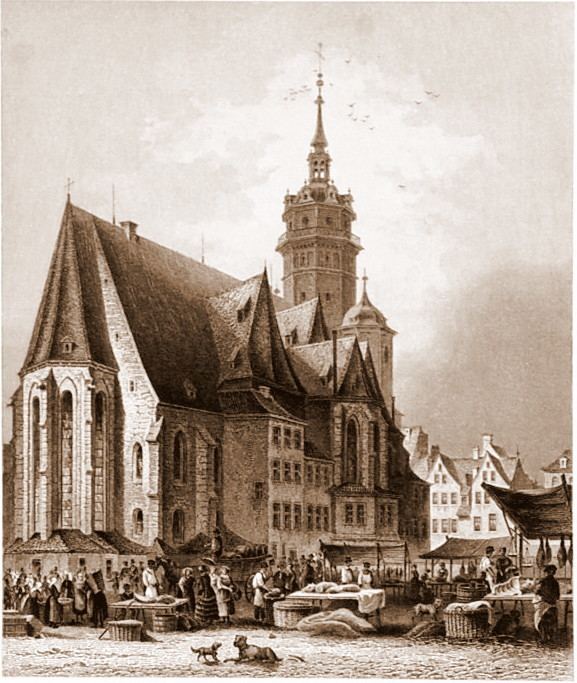Movements 3 | ||
 | ||
Related Occasion ChristmasPeace of Dresden Comment Bach's only cantata in Latin | ||
Gloria in excelsis Deo (Glory to God in the Highest), BWV 191, is a church cantata written by the German Baroque composer Johann Sebastian Bach, and the only one of his church cantatas set to a Latin text. He composed the Christmas cantata in Leipzig probably in 1745 to celebrate the end of the Second Silesian War on Christmas Day. The composition's three movements all derive from the Gloria of an earlier Missa (Kyrie and Gloria in B minor) written by Bach in 1733 for the Dresden court, which the composer would later use as the Gloria of his Mass in B minor.
Contents
History
Gloria in excelsis Deo was written in Leipzig for Christmas Day, as indicated by the heading on the manuscript in Bach's own handwriting, "J.J. Festo Nativit: Xsti." (Jesu Juva Festo Nativitatis Christi – Celebration for the birth of Christ), to be sung around the sermon. Recent archival and manuscript evidence suggest the cantata was first performed not in 1743, but in 1745 at a special Christmas Day service to celebrate the Peace of Dresden, which brought to an end the hardships imposed on the region by the Second Silesian War.
Unlike Bach's other church cantatas, the words are not in German, taken from the Bible, a chorale or contemporary poetry, but in Latin, taken from the Gloria and the Doxology. This late work is the only Latin cantata among around 200 surviving sacred cantatas in German. It is based on an earlier composition, the Missa in B minor (Kyrie and Gloria) which Bach had composed in 1733 and that would, in 1748, become part of his monumental Mass in B minor. The first movement (Gloria) is an almost identical copy of the earlier work, while the second and third movements are close parodies. Parts, for instance, of the fugal section of Sicut erat in principio, taken from the Cum sancto spiritu of the 1733 setting, are moved from a purely vocal to an instrumentally accompanied setting. The modifications Bach made to the last two movements of BWV 191, however, were not carried over into the final manuscript compilation of the Mass in B minor, leaving it a matter of speculation whether or not these constitute "improvements" to Bach's original score.
Scoring, words and structure
The cantata bears the heading ::J.J. Festo Nativit: Xsti. Gloria in excelsis Deo. à 5 Voci. 3 Trombe Tymp. 2 Trav 2 Hautb. 2 Violini Viola e Cont. Di J.S.B. in Bach's own handwriting. The cantata is festively scored for soprano and tenor soloists and an unusual five-part choir (with a dual soprano part), three trumpets, timpani, two flauto traverso, two oboes, two violins, viola, and basso continuo. Its only link to Christmas is the opening chorus on Luke (Luke 2:14), to be performed before the sermon. The other two movements after the sermon (marked "post orationem") divide the general words of the Doxology in a duet Gloria Patri et Filio et Spiritui sancto (corresponding to the Domine Deus, the central piece of the Gloria of the Mass in B minor) and a final chorus Sicut erat in principio (corresponding to Mass in B minor structure#Cum sancto spiritu of the Gloria). The final movement may contain ripieno markings (to accompany the chorus) similar to the ripieni found in Unser Mund sei voll Lachens, BWV 110, which was also a nativity cantata.
- Coro: Gloria in excelsis Deo
- Duetto (soprano/tenor): Gloria Patri et Filio et Spiritui sancto
- Coro: Sicut erat in principio
